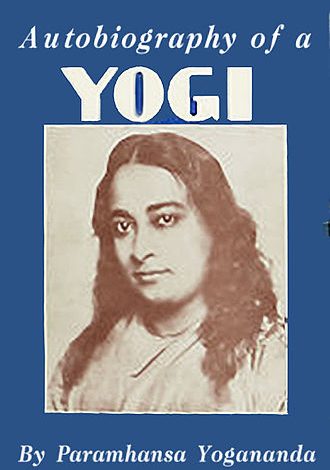Autobiography of a Yogi

Autobiography of a Yogi introduces the reader to the life of Paramahansa Yogananda and his encounters with spiritual figures of both the Eastern and the Western world. The book begins with his childhood family life, to finding his guru, to becoming a monk and establishing his teachings of Kriya Yoga meditation. The book continues in 1920 when Yogananda accepts an invitation to speak in a religious congress in Boston, Massachusetts, USA. He then travels across America lecturing and establishing his teachings in Los Angeles, California. In 1935, he returns to India for a yearlong visit. When he returns to America, he continues to establish his teachings, including writing this book.
The book is an introduction to the methods of attaining God-realization and to the spiritual wisdom of the East, which had only been available to a few in 1946. The author claims that the writing of the book was prophesied long ago by the nineteenth-century master Lahiri Mahasaya (Paramguru of Yogananda) also known as the Yogiraj and Kashi baba. Before becoming a yogi, Lahiri Mahasaya’s actual name was Shyama Charan Lahiri.
It has been in print for seventy years and translated into over fifty languages by Self-Realization Fellowship.[2] It has been highly acclaimed as a spiritual classic including being designated by Philip Zaleski, while he was under the auspices of HarperCollins Publishers, as one of the “100 Most Important Spiritual Books of the 20th Century.”[3][4][5] It is included in the book 50 Spiritual Classics: Timeless Wisdom from 50 Great Books of Inner Discovery, Enlightenment and Purpose by Tom Butler-Bowdon.[6] According to Project Gutenberg, the first edition is in public domain and at least five publishers are reprinting it and four post it free for online reading.
Autobiography of a Yogi examines the life and spiritual development of Paramahansa Yogananda. The book describes Yogananda’s childhood family life, his search for his guru, Swami Sri Yukteswar Giri,[7] the establishment of his first school, Yogoda Satsanga Brahmacharya Vidyalaya,[8] and his journey to America where he lectured to thousands,[9] established Self-Realization Fellowship[10] and visited Luther Burbank,[11] a renowned botanist to whom the book is dedicated. The book then describes Yogananda’s return visit to India in 1935 where he encountered leading spiritual figures such as Therese Neumann[12][13] in Bavaria, the Hindu saint Ananda Moyi Ma,[14] Mahatma Gandhi,[15] Rabindranath Tagore,[16] Nobel Prize-winning physicist Sir C. V. Raman,[17] and Giri Bala, “the woman yogi who never eats.”[18] Finally, Yogananda describes his return to the West, where he continued to establish his teachings in America, including the writing of the Autobiography.
The preface was written by anthropologist Walter Evans-Wentz, a writer who was a pioneer in the study of Tibetan Buddhism in the west, most notably through his translations of The Tibetan Book of the Dead and Tibet’s Great Yogi Milarepa. In the preface he wrote, “His unusual life-document is certainly one of the most revealing of the depths of the Hindu mind and heart, and of the spiritual wealth of India, ever to be published in the West.”[19]
Yukteswar Giri, Yogananda’s guru, told him about a significant prediction made by Lahiri Mahasaya, Yukteswar’s guru.[20] Yukteswar heard him say, “About fifty years after my passing,” he said, “my life will be written because of a deep interest in yoga which the West will manifest. The yogic message will encircle the globe, and aid in establishing that brotherhood of man which results from direct perception of the One Father.” In 1945 fifty years after Lahiri Mahasaya’s passing in 1895, the Autobiography was complete and ready for publication.
In 1999, Autobiography of a Yogi was designated as one of the “100 Most Important Spiritual Books of the 20th Century” by a panel of theologians and luminaries convened by HarperCollins publishers.[3] According to Philip Goldberg, who wrote American Veda, “… the Self-Realization Fellowship which represents Yogananda’s Legacy, is justified in using the slogan, “The Book that Changed the Lives of Millions.” It has sold more than four million copies and counting …”[21] Autobiography of a Yogi is the most popular of Yogananda’s books and SRF has published the book into over fifty languages.[22]
